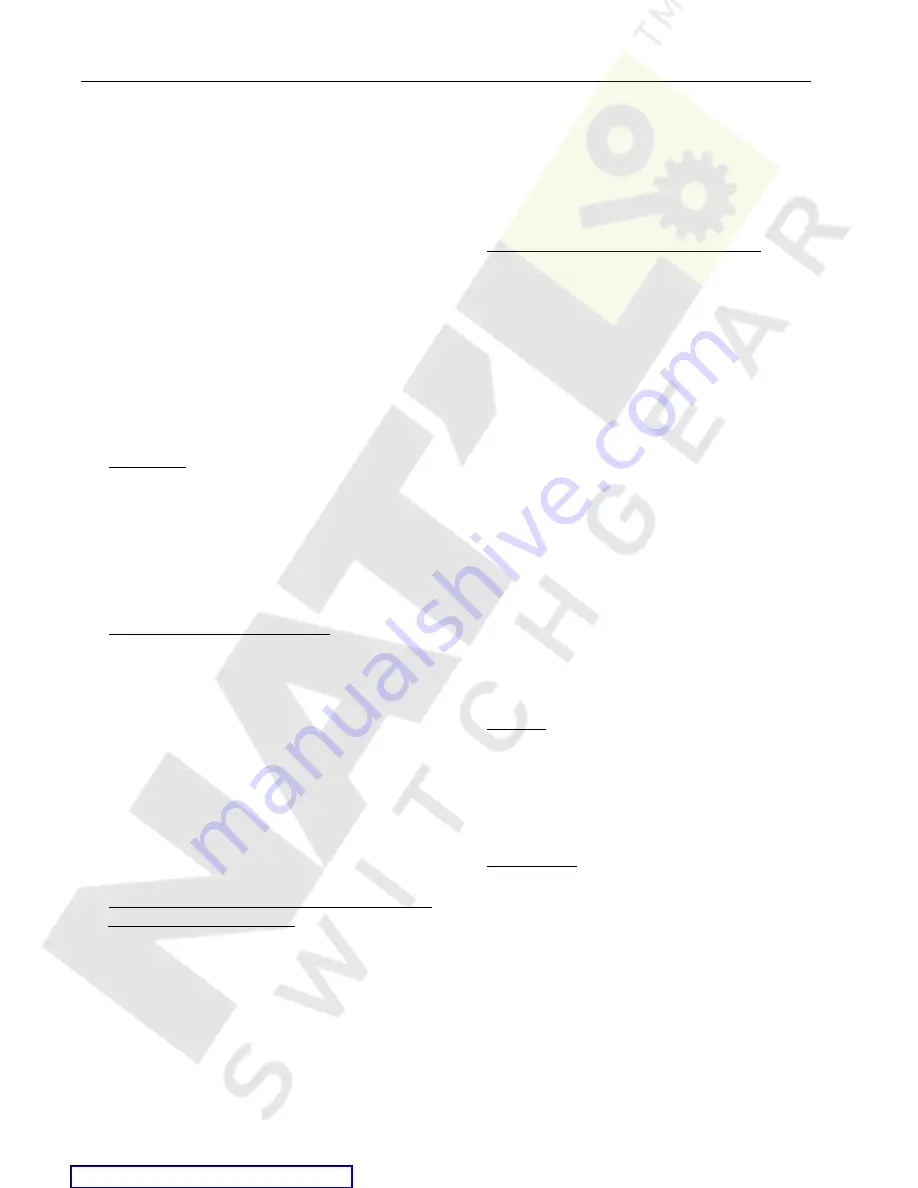
41-337.3L
10
CA-16 relay or 14 amperes to terminals 9 and 19
of the CA-26 relay. The contacts should close
when the following operating current is applied to
the relay with connections of Figure 11.
1. CA-16
17.0
±
7% amperes
2. CA-26
38.0
±
7% amperes
Check each individual restraint winding by apply-
ing 50 amperes to each winding. Apply sufficient
operating current to the operating circuit until the
contacts just close. The operating current should
be:
1. CA-16
3.9 to 5.1 amperes
2. CA-26
15.8 to 18.2 amperes
C. Time Curve
Apply 20 amperes to terminals 12 and 13 of the
relays. The contacts should close in the following
times:
1. CA-16
52
±
5% Milliseconds
2. CA-26
72
±
5% Milliseconds
D. Indicating Contactor Switch (ICS)
Close the main relay contacts and pass sufficient
dc current through the trip circuit to close the
contact of the ICS. This value of current should
not be greater than the particular ICS tap setting
being used. The operation indicator target
should drop freely.
The contact gap should be approximately 0.047
inch between the bridging moving contact and
the adjustable stationary contacts. The bridging
moving contact should touch both stationary
contacts simultaneously.
E. Indicating Instantaneous Unit (IIT) – Where sup-
plied) or Fault Detector (FD)
The core screw which is adjustable from the top
of the trip unit determines the pick-up value. The
trip unit has a nominal ratio of adjustment of 1 to
4 and an accuracy within the limits of 10%.
The making of the contacts and target indication
should occur at approximately the same instant.
Position the stationary contact for a minimum of
1/32 inch wipe. The bridging moving contact
should touch both stationary contacts simulta-
neously. Apply sufficient current to operate the
IIT. Fault detector unit has no target.
F.
Sensitive Fault Detector (where supplied)
Apply current to terminals 14 and 15 of the relay.
The fault detector should operate between the
limits of 0.142 to 0.158 amperes.
7.2.
Routine Maintenance
All contacts should be periodically cleaned. A contact
burnisher Style number 182a836H01 is recom-
mended for this purpose. The use of abrasive mate-
rial for cleaning contacts is not recommended,
because of the danger of embedding small particles
in the face of the soft silver and thus impairing the
contact.
8. CALIBRATION
The use of the following procedure for calibrating the
relay if the relay has been taken apart for repairs or
the adjustments disturbed. This procedure should not
be used until it is apparent that the relay is not in
proper working order. (See “ACCEPTANCE
CHECK”).
1.
Contacts
Adjust the adjustable stop screw on the upper
disc of the relay so that a contact separation of
0.050 inch is obtained between the moving con-
tact and the stationary contact. Lock the screw
with the nut provided for the purpose.
2.
Minimum Trip
The relay should be level for this test. Minimum
trip current can best be determined with the per-
manent magnet removed.
Adjust the spring tension until the relay just
closes its contacts with the following current
applied to terminals 12 and 13 of the relay.
1. CA-16
0.15 amperes
2. CA-26
1.25 amperes


































